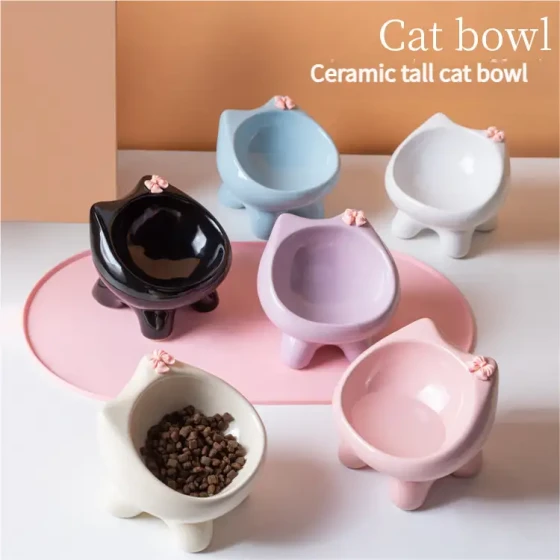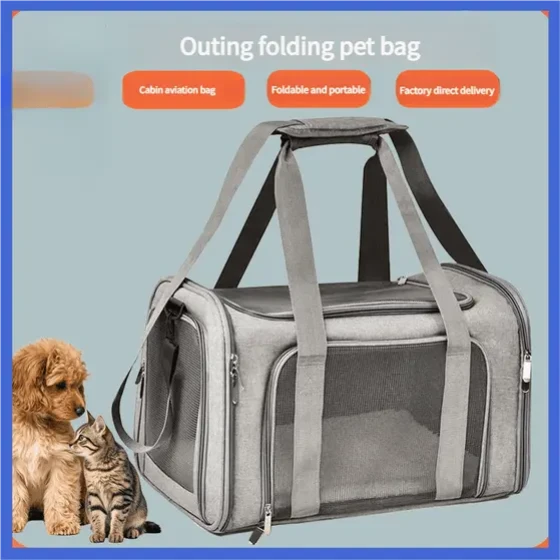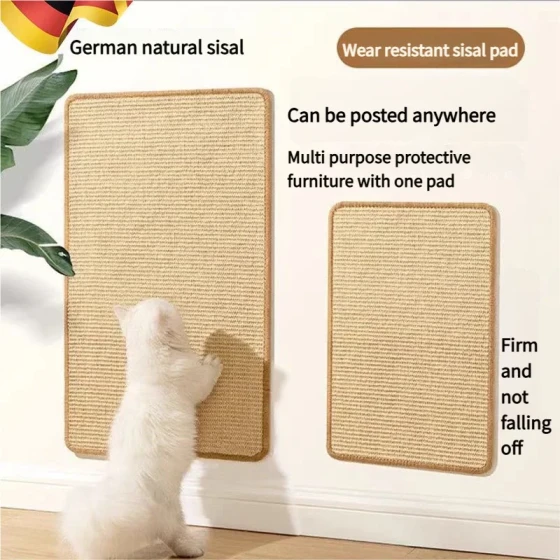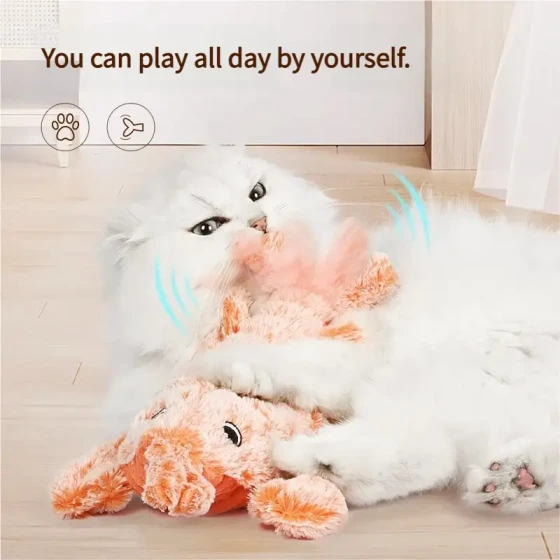How long does feline panleukopenia virus survive indoors_How long can feline panleukopenia virus survive at home
Feline panleukopenia virus, scientifically named feline panleukopenia virus (FPV), is a highly contagious virus that is very dangerous to felines, especially kittens, with a mortality rate as high as 80%-90% or more. Many cat owners are very concerned: if there has been a case of feline panleukopenia at home, how long can this "troublesome little demon"—the feline panleukopenia virus—survive in the indoor environment? And how can it be thoroughly eliminated?
The vitality of the feline panleukopenia virus is quite tenacious; it is not as "delicate" as ordinary flu viruses. Under suitable conditions, such as appropriate temperature and humidity, the virus can survive in the environment for several months. Some sources even mention that under favorable conditions, the virus can survive up to a year or even longer. Therefore, even after the cat recovers or leaves, the virus may still lurk in the home, posing a potential threat to new kittens.
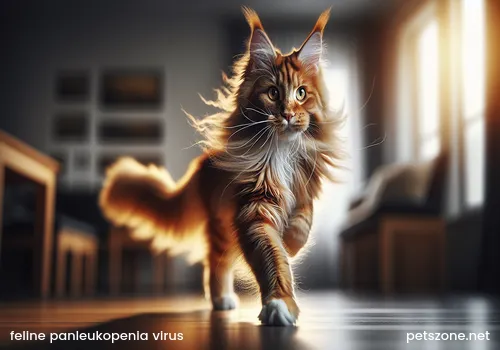
Why is the feline panleukopenia virus so “tenacious”?
The reason the feline panleukopenia virus can "hibernate" in the environment for so long is mainly due to its structural characteristics. It belongs to the Parvoviridae family, which has a sturdy protein shell that is highly resistant to physical and chemical factors in the external environment. High temperatures (such as 56 degrees Celsius) need to act for at least half an hour to inactivate part of the virus, and commonly used alcohol and iodine solutions are almost ineffective against the feline panleukopenia virus.
How is the virus transmitted?
The feline panleukopenia virus is mainly transmitted via the fecal-oral route, meaning that cats can be infected after coming into contact with virus-contaminated feces and then licking themselves. Besides direct contact with the bodily fluids and excretions of sick cats, indirect transmission is also a very important route. The virus can spread through contaminated items such as litter boxes, food bowls, toys, clothes, shoes, and even the owner's hands. Therefore, even indoor-only cats can become infected if their owners bring the virus home from outside. Even after recovery, infected cats can shed the virus in their feces for weeks, some even for months or more than a year.
How to thoroughly eliminate feline panleukopenia virus at home?
Faced with such a tenacious virus, thorough disinfection is key. Here are some effective disinfection methods:
- Bleach (sodium hypochlorite): This is one of the most commonly used and effective disinfectants against the feline panleukopenia virus. It is recommended to dilute it at a ratio of 1:32 and then use it to wipe or spray floors, walls, cat supplies, etc. Note that after using bleach, wipe clean with water and keep good ventilation to avoid irritating cats.
- Glutaraldehyde: A 2% concentration glutaraldehyde solution has also been proven to be effective in killing the feline panleukopenia virus, commonly used in veterinary hospitals and similar places.
- Potassium peroxymonosulfate compound salt: This type of disinfectant is also effective against the feline panleukopenia virus.
- Ultraviolet disinfection: Ultraviolet light can destroy the virus structure and help kill viruses in the environment. You can use UV disinfection lamps to irradiate rooms and cat items but ensure no people or pets are inside during irradiation, and ventilate well after use.
- Steam cleaning: High-temperature steam can assist disinfection, especially for items difficult to immerse in disinfectant solutions.
Disinfection is more than just wiping the floor
Thorough disinfection is a systematic process, not just simply wiping the floor. It is necessary to disinfect all potentially contaminated areas at home, including:
- Floors, walls, and furniture surfaces.
- Litter boxes, feeding bowls, water dishes, toys, and other daily supplies for cats.
- Cat beds, mats, blankets, and other textiles, preferably washed with hot water combined with disinfectant.
- Poorly ventilated corners and crevices.
How long after disinfection can new cats be brought in?
Even after thorough disinfection, considering the tenacity of the feline panleukopenia virus and that recovered cats may continue to shed the virus, it is recommended to wait some time before welcoming new cats home, especially unvaccinated kittens. Although some opinions say that new cats can be introduced anytime after proper disinfection, to minimize risk, some suggest waiting 3 months to half a year, or even more than a year after thorough disinfection and ventilation before introducing new susceptible cats. If there are cats in the home who had feline panleukopenia and recovered, it is advised to only let new cats interact after they have completed vaccination and developed adequate immunity.
Prevention of feline panleukopenia: Vaccination is the "king"
Although disinfection is important, the most effective way to prevent feline panleukopenia is to vaccinate. The feline panleukopenia vaccine is one of the core vaccines all cats should receive on time. Kittens usually start their first vaccination at 8-12 weeks of age, followed by multiple boosters according to the vaccine type and vet’s advice. Adult cats also require annual booster vaccinations to maintain immunity.
Cat care tips:
- Quarantine new cats: When introducing a new cat, it must be quarantined and observed to ensure health before contact with resident cats. The quarantine period is usually recommended for at least two weeks to a month.
- Pay attention to personal hygiene: After contact with outside cats, wash hands and change clothes timely when coming home to avoid bringing the virus back.
- Regular health checks: Regularly take cats to the vet for health examinations for timely detection and treatment of potential health issues.
- Maintain environment cleanliness: Even without feline panleukopenia cases at home, regular environmental cleaning and disinfection help reduce other pathogen growth.
Feline panleukopenia is frightening, but through scientific prevention and effective disinfection measures, we can maximize protection for our cats from the virus. Provide a clean and safe living environment for cats so they can grow healthily and happily!
Frequently Asked Questions
Q1: Can the feline panleukopenia virus infect humans?
A1: No. The feline panleukopenia virus (FPV) is specific to felines and does not infect humans or other non-feline animals.
Q2: Can recovered cats still spread the virus?
A2: Yes. Recovered cats can still shed the virus in their feces for a period (usually several weeks to months, even more than a year) and remain infectious.
Q3: How to tell if a cat is infected with feline panleukopenia?
A3: Typical symptoms include fever, lethargy, loss of appetite, vomiting, diarrhea (possibly bloody), etc. If a cat shows these symptoms, seek medical diagnosis immediately. Vets usually conduct blood tests (noting significant white blood cell reduction) and use feline panleukopenia virus test strips for preliminary diagnosis.
Q4: Is there a specific treatment for feline panleukopenia?
A4: Currently, there is no specific antiviral drug for feline panleukopenia. Treatment mainly consists of supportive care, including fluid therapy to correct dehydration and electrolyte imbalance, antibiotics to prevent secondary infections, antiemetics and antidiarrheals, etc. Treatment efficacy depends on the cat's immunity, infection severity, and timely veterinary care.
Q5: Why are kittens more susceptible and have higher mortality rates from feline panleukopenia?
A5: Kittens’ immune systems are not fully developed and have weaker resistance. The virus attacks rapidly dividing cells such as bone marrow and intestinal cells, causing severe white blood cell depletion and immune failure. The severe gastrointestinal symptoms result in dehydration and malnutrition, increasing mortality risks in kittens.
References:
Feline Panleukopenia Strong Popular Science Post (including emergency treatment measures) - Diary- Douban (2019-05-28)
Tested methods that can kill feline panleukopenia! Various disinfection methods for daily, disease, epidemic situations - Douban (2020-01-10)
Feline Panleukopenia—The most lethal infectious disease in the cat world (2021-08-01)
What is feline panleukopenia? Symptoms, Transmission, Prevention, and Treatment - VEC | Hong Kong 24-hour Veterinary Clinic
[Cat Health] Quickly understand feline panleukopenia, 8 early symptoms and treatment summary (2021-07-30)
Feline Panleukopenia - Infectious Diseases - MSD Veterinary Manual
Feline Panleukopenia - Cat Owners - Merck Veterinary Manual
Cat diseases—feline panleukopenia - I Love Taichung - Children's Animal Protection and Epidemic Prevention Network (2018-12-17)
Feline Parvovirus (FPV) - Cats Protection
Feline Panleukopenia Virus - Langford Vets
Feline Panleukopenia Cleaning and Home Quarantine Issues - PetTalk (2020-09-04)
Feline Panleukopenia | Merck Animal Health USA
How to properly deal with "feline panleukopenia"? Prevention is key! (2023-08-30)
Can feline panleukopenia virus attach to clothes? - Vet Easy (2022-09-30)
Can 75% alcohol kill feline panleukopenia virus?_Cat Knowledge (2020-11-27)
Start preventing feline panleukopenia now_Mobile Sina (2010-07-03)
How to disinfect after canine distemper, feline panleukopenia, parvovirus, coronavirus, influenza, infectious hepatitis in cats and dogs|163_Mobile NetEase (2019-07-17)
Feline Panleukopenia Vaccine Introduction - Veterinary Technology Information Network
Pet nutrition | Mushrooms polysaccharide helps cats wear protective gear, increase natural resistance (2021-12-10)
Difficult to treat feline panleukopenia veterinarians: vaccination reduces infection - Juheng Network (2012-07-19)
How long after having feline panleukopenia can the house keep cats again? - My Cat's Name is Baozi's answer - Today’s Headlines
What are the early symptoms of feline panleukopenia? Comprehensive analysis of symptoms, incubation period, and treatment cost! - Smelly Cat Zoo (2025-01-16)
Feline panleukopenia mortality rate reaches 90%? Causes, incubation period, symptoms, and prevention of feline panleukopenia - Furmomo (2025-02-10)
Pet nutrition | Mushrooms polysaccharide helps cats wear protective gear, increase natural resistance (2021-12-10)
How to disinfect cats' residence - Bur Pharma
COVID-19 Personal Protection Booklet (2021-05-09)
Is feline panleukopenia really fatal? Can it be cured? (2023-10-10)
